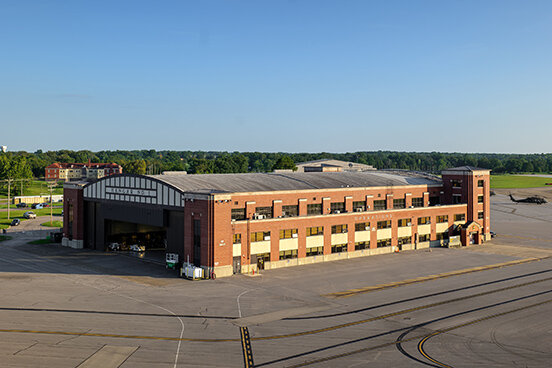U.S. Army
Fort Knox, Airfield
Estimated Annual Savings: $56,395
Project Highlights
Expedited project development - completed in less than four months
Generation of over 50,000 LB of recyclable scrap metal for Army
Energy Conservation Measures
Full LED lighting retrofits
Electrical infrastructure upgrades
Replacement of Airfield cable
Replacement of non-reusable conduit
Replacement of Constant Current Regulators
New Airfield Lighting Control and Monitoring System
Separation of the 2400VAC system from the airfield lighting system
Complete demolition and repair of threshold light bars on both sides of a Runway (approximately 4’ x 150’ on each side, 30 total lights)
Project Background: In May 2019, Fort Knox’s Godman Army Airfield experienced a failure of the airfield lighting infrastructure, which impacted its mission and resulted in an overarching safety and operational issue for the Army. Given CEG’s previous work on Fort Knox’s energy systems, the Army Corps of Engineers asked us to review the electrical infrastructure and airfield lighting systems as part of a follow-on phase to our existing ESPC project. Our project ultimately upgraded two runways, three ramps, numerous parking areas, and a series of five major connecting taxiways, giving Fort Knox the distinction as having the first and to date, only Army airport with 100% LED lights. These lighting upgrades reduce energy and operational costs, saving the Army over $56,000 annually.
We developed several site-specific electrical measures to restore functionality to critical infrastructure and replace failed, obsolete, and non-operational equipment. These measures include (1) replacement of ~180,00 linear feet of airfield lighting cable and ~4,000 linear feet of conduit, (2) upgrade of taxiway, runway, and helicopter pad lights to LEDs (in line with Federal Aviation Administration regulations), (3) replacement of Constant Current Regulators, (4) replacement of the existing Airfield Lighting Control and Monitoring System and (5) separation of airfield lighting cable circuits and regular power circuits to align with code requirements (a new transformer now separates a 2400VAC system, providing reliable power to the existing weather monitoring system).
Results: Our project has revitalized the airfield’s lighting and electrical systems and provided the Army with simpler, safer operations and maintenance (O&M). Previously, the airfield endured routine ground faults due to aging, poorly-spliced cable. Preventative maintenance was further complicated by poor upkeep of the system manholes, which were cluttered with abandoned cabling and presented life-safety concerns. Our project addresses these problems by (1) installing new water-resistant rack-mounted airfield cabling in the system manholes and (2) leveraging controls changes and longer-lasting LEDs to streamline maintenance routines.
First and ONLY ARMY Airport with 100% LED lights on the runways and taxiways.








